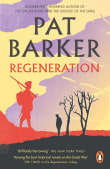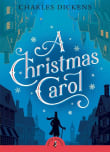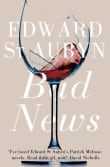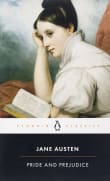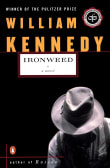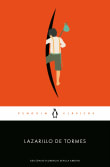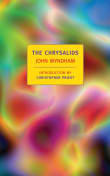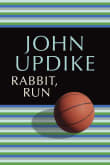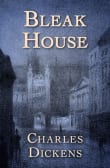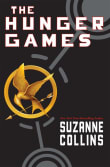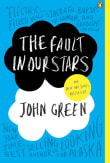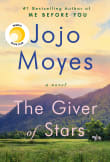One Flew Over the Cuckoo's Nest
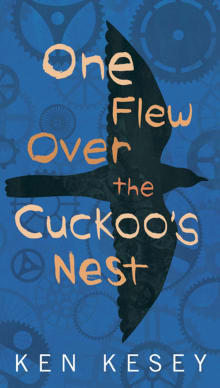
Book description
Boisterous, ribald, and ultimately shattering, Ken Kesey's 1962 novel has left an indelible mark on the literature of our time. Now in a new deluxe edition with a foreword by Chuck Palahniuk and cover by Joe Sacco, here is the unforgettable story of a mental ward and its inhabitants, especially…
Why read it?
12 authors picked One Flew Over the Cuckoo's Nest as one of their favorite books. Why do they recommend it?

Whenever I feel trapped, I think about this book. Told in the first person, it brought me into the asylum and locked me in there with the other patients, and even once I finished reading it, I didn’t feel completely free.
There’s something I like to call “Hollywood Mental Illness.” Movies tend to sugarcoat mental disorders and make them seem fun and entertaining. This book does nothing of the sort. I felt the isolation, the fear, and the sheer panic that these characters faced, like a huge, heavy ball in the pit of my stomach and a zigzagging anxiety that…
From Laura's list on mystery that takes you into the characters head.

Sci-fi/fantasy? Perhaps not in the traditional sense, but Kesey wrote metaphors, novels rich in magic, and fantasies rooted in the very real and concrete threats to our world and how to combat them.
I read this book many years ago, and it shook me to my core. It is a story of courage, redemption, and resistance to tyranny, regardless of the consequences. Ironically, though Randal McMurphy is a rascal and reprobate of the first order, he is almost Christlike in his unwavering compassion for and commitment to empowering the men with whom he shares the mental ward, even when it…
From Don's list on books that are fantasy sci-fi and make you think.

This book’s celebration of rebelliousness of spirit and anti-institutionalism is why I like it.
Set in a psychiatric hospital, like Regeneration, its medical staff are closer in spirit to Dr. Yealland in that book, who prefers inflicting pain in order to cure than to the humane Dr. Rivers. I enjoyed the humour and the scandalous behaviour of McMurphy, the sane con-man in the asylum who battles the authoritarian and controlling Nurse Ratched. It is very much in the spirit of the anti-establishment 1960s when it was written.
Other inmates rebel too and draw down Ratched’s ire upon themselves, leading…
From Julie's list on evocative stories set in a hospital.

As a young man, Ken Kesey worked as an orderly in a psychiatric ward and participated in CIA-funded hallucinogen studies conducted in the hospital. Looking out at the patients and nurses, he wondered what separated them.
What emerged from those experiences is the mesmeric narrator of his first book: the giant, Chief, sees the world through a terrifying poetic lens. Observant and cunning, he perceives all the forces of authority and conformity as a single machine he calls “The Combine.”
Kesey’s novel is a fable about the power of the individual to oppose any coercive larger force, even if victory…
From Colm's list on books with a gritty psychedelic worldview.

Kesey’s great American novel shares with Frederick Wiseman’s first and most controversial film, Titicut Follies, a view of the nation as a mental institution.
Like Wiseman’s films, the novel resonates with American mythology, from the falsely mute Native American narrator, chief Bromden, to the boisterous protagonist, Randall Patrick McMurphy, who sports underwear with images of whales on it.
In the book, Chief Bromden refers to “The Combine” as a combination of the military-industrial complex and dominant ideology, the same phrase the governor of the Canal Zone uses to describe the political and economic control of Zonian life in Wiseman's…
From Barry's list on appreciating the films of Fredrick Wiseman.

This novel is about a criminal who is sent to a mental institution because he pretended to be insane in order to avoid going to prison.
The book, beautifully written and loved by many, aims to show the conditions at some state hospitals at the time it was written. The malignant Nurse Ratched personifies these conditions. The psychiatrist, in contrast, is caring and empathic and actually tries to help his patients.
An excellent movie by the same name is based on this novel. I like the fact that the psychiatrist in the film is played by the real-life psychiatrist who…
From Monica's list on good and bad psychiatrists.

Possibly the 20th century’s most famous book about involuntary commitment, it’s remarkable—and profoundly disturbing—how well Ken Kesey’s masterpiece has stood the test of time.
Kesey was working in a psychiatric hospital as he wrote it, and portrays all-too-vividly the twisted relationships of power, climate of fear, daily routines of institutionalization, insipid group “therapy,” often debilitating medical treatments, and sudden bouts of violence from both sides. Most institutions are simply smaller now.
Readers today might question a white man writing through the eyes of a mute “half-Indian”—but it situates front and center stingingly timely examinations of racism, ableism, and sanism…
From Rob's list on involuntary commitment and psychiatric treatment.

Yikes! Kesey wrote this the year I was born and published it a few years later, and its scenes haunt me still. Need a lesson in character development? This novel has it all: the wretched head nurse of the mental institution, Nurse Ratched, the stuttering Billy Bibbit (such a cruel name!), the “Chief,” who narrates and holds secrets, and among many others, our villain, Randle McMurphy, who inspired me to cheer for his acts of defiance while I cringed from the consequences.
This novel about authority, control, brutal manipulation, and railing against it all will challenge all notions of a…
From Laurel's list on you’ll be excited to share with young adults.

Ken Kesey was a student of Wallace Stegner, and Stegner did not think much of Kesey, who went on to write this classic within the stream of consciousness fiction movement. My own writing has been influenced by Wallace Stegner, and I can understand why he was not a fan of stream of consciousness fiction. One Flew Over the Cuckoo’s Nest is written in the present tense, and this pioneering novel does as much as anything I can think of in convincingly blurring the lines between what we consider to be insanity and what is normal. Jack Nicholson starred in the…
From Don's list on written in the present tense.

Did you ever defy unfair rules imposed on you by a boss, teacher, or parent and have to pay dearly for your rebelliousness? If so, you’re sure to identify with the main character of Kesey’s first novel, petty criminal Randle McMurphy, who’s serving a prison term for assault. In order to win a transfer to a psychiatric hospital and receive more lenient treatment, he fakes insanity. Once there, however, his defiant antics, zest for life, and sexual allure put him in conflict with the puritanical head of his ward, Nurse Ratched, who comes to see him as a disruptive misfit…
From Richard's list on outsiders and misfits.
Want books like One Flew Over the Cuckoo's Nest?
Our community of 12,000+ authors has personally recommended 100 books like One Flew Over the Cuckoo's Nest.

